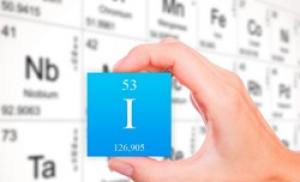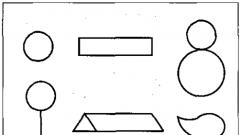The number of people in the battalion of the Russian army. Units in the army
The structure of the army is clear and understandable, but only for those who have served in it. For most civilians, a link, company and division is a certain part, which is understood as a certain number of soldiers, but how many? Let's try to understand the units of the army, to determine what is larger: a regiment or a division, an army or a front.
From small to big
The whole variety of the military representing the Russian army is divided into parts, which are also divided and so on sequentially to the minimum unit - a squad, including 4-10 people. Its number is related to the type of troops and the task being performed.
So, in tank troops, a squad is a tank crew, including 3-4 people, and in an artillery unit, a calculation of 6 people. A unit may be referred to as a fireteam or flight. It performs a specific task, managing with small forces.
Employees in the link, as a rule, communicate closely with each other and can coordinate joint actions well. In modern warfare tactics, a well-trained link can play a significant role in the battle, carrying out reconnaissance activities, penetrating behind enemy lines, and so on.
Two or three fireteams cooperate to form a detachment led by a commander. The effectiveness of the work of such a detachment greatly depends on the quality of the military training of each of its members, as well as on the coordination of the actions of the soldiers. A well-organized infrastructure and the direct leadership of the detachment determines a lot.
Such associations give good results, provided that among them are professional soldiers with combat experience. They are maneuverable, hardly detected by the enemy, highly qualified and able to cope with various tasks.
- platoon;
- company;
- battalion;
- regiment;
- division and brigade;
- frame;
- army;
- front or army corps.
From Lieutenant to Colonel
A platoon is a structure that includes several squads. The number of people in it can be in the range from 15 to 60, depending on the type of troops. It is led by a military man with the rank of lieutenant, including junior or senior.
Initially, a platoon is a rifle unit, the army had 3 platoons that fired “in turn”, so while some were reloading, others were aimed fire. Today, the diversity of this unit is much wider, and they are united by an approximate number of people.
A separate type of platoon has a name in accordance with the combat mission, it can be:
- tank;
- anti-aircraft missile;
- medical;
- motorized rifle;
- engineer-sapper;
- reconnaissance and so on.
The next unit is the company. This is a tactical structure. It can operate both in the structure of the battalion and independently. For example, the third reconnaissance company or the first air force communications company. In some branches of the RF troops, a company has a special name: a battery - in artillery, a squadron - in cavalry, a link - in aviation. This structure is commanded by a captain, less often by a major.
How many people are in a company of the Russian army? Since it includes 2-4 platoons, respectively, it has from 30 to 150 servicemen. Two to four companies form a battalion of more than 250 men.
This structure is quite numerous and can independently carry out many military tasks, which are coordinated by the battalion headquarters headed by a major or captain, less often a lieutenant colonel. All information and sources of resources are concentrated in the headquarters, it is from here that command, communications, coordination of actions, and the organizational part are carried out.
The manager must have an assistant, whose functions include fixing and adjusting ongoing actions, as well as assistance in developing future operations. For the battalion, it is important to have a source of replenishment that allows you to perform the assigned tasks. Since his soldiers are limited in material support only by what they can carry themselves or transport on available vehicles, they are constantly in need of additional equipment.
Officers with the rank of lieutenant colonel often command regiments, where they deserve the next rank - colonels. The regiment consists of 3 to 6 battalions, with a total strength of no more than 2 thousand people. This unit is completely autonomous and independently performs combat missions.
The regiment includes not only firing units, but also repair departments, medical stations, communications platoons, and so on. Due to which the regiment fully coordinates its activities and ensures viability. Resources must be supplied regularly, so warehouses and workshops are assigned to the regiment, producing the necessary funds.

Privates are the main active force of the army, it is from them that battalions, companies and regiments are formed.
Commanding Thousands
Even more massive elements are brigades and divisions. The first includes a number of battalions and auxiliary companies, maybe a couple of regiments. It is equivalent to a reinforced battalion. The total number can reach up to 8 thousand people. It is led by a brigade commander with the rank of colonel.
In addition to combat units, brigades include combat support structures: engineers, artillery, medical unit, logistics. Brigades are divided into general and specialized. The latter include battalions of only one type: armored, cavalry, anti-aircraft, and so on.
As necessary, other units can join the brigade at the time of the assignment, then they become subordinate to the previous leadership. The brigade is led through the headquarters, which, in addition to the brigade commander, includes staff officers.
How many people are in a division of the Russian armed forces? Today it is from 1 to 2 tens of thousands of soldiers. During the Great Patriotic War, the strength of the division was more scattered: from 8 to 30 thousand. Therefore, a division is sometimes equated with a brigade, but this is a larger structure, which includes regiments in small numbers and auxiliary units.
They are commanded by a major general or a higher rank. Today, divisions are smaller and can be formed according to the intended task, including a very small number of soldiers, but at the same time, the presence of headquarters and resource points remains.
The special position of the division in the structure of the navy. Here it is smaller in number of people and includes several ships or a squadron, a couple of aircraft sections subordinate to the head of the unit.
The corps can include up to one hundred thousand people, uniting a group of divisions. This is a combined arms formation that does not have a specialization and is managed by a major general or an officer with a higher rank. The corps are numbered, as a rule, in Roman numerals, but the formations subordinate to them are in Arabic.
A group of corps unites into an army, which includes a minimum of 100 thousand people, and the upper limit is limited to a million. In the domestic armed forces, such a number is not found, which is associated with the total population in the country.
During military conflicts, its composition can grow significantly due to the mobilization of the population. The command of the army rests on the shoulders of a major general or lieutenant general. An army can have a geographic name or a numerical one, or a combination of both.

The army corps includes many units with a variety of functions.
The structure of the army is represented by a wide range of battalions and divisions, individual structures may not belong to the army in accordance with its territorial location. The most numerous structure of the army is the military district, which during the fighting is called the front.
The number of soldiers and officers included in its composition is difficult to determine. It varies depending on the military doctrine of the state, the political situation in the world and other factors, including from 400 thousand soldiers to 1 million. Sometimes they unite national formations.
The command of this structure is entrusted to a lieutenant general or army general, who is primarily responsible for the results of a military campaign and determines the tactics of military operations. There are other names in military terminology: connection, military unit, association. But they mainly act as special cases, differing in the given type of troops in their specifics and the military task being implemented.
Understanding the intricacies of military terms is not easy, in order to understand what is larger and how this or that unit is formed, you need to serve for more than one year, getting acquainted with the structure and historical past of the national army.
After all, often the names are rooted in the past and persist to this day, although the structure could already have changed. The size of the armed forces is also changing, which is associated with demographic issues, as well as the improvement of weapons and tactics of warfare, which no longer require a large contingent.
Hierarchy and number of military formations.
Finally, the Combat Charter of the Ground Forces comes into force. You can more or less decide on the hierarchy, although I only got acquainted with two parts.
In general, I am often asked questions like “how many people are in the division”, “how many people are in the brigade”. Well, it's impossible to answer this question. Because I can give an answer, say, about a tank regiment, but they were interested in cavalry in general, and even in the 40th year. The fact is that the very name “detachment”, “platoon”, “company” does not depend on the strength, but, firstly, on the type of troops, and, secondly, on the tactical tasks that are assigned to the formation of this type.
And so, the smallest formation:
"Squad" (calculation for artillery, Crew for tankers).
The squad is commanded by a sergeant (junior sergeant) armed with an AK74
The motorized rifle squad consists of 9 ... 13 people (in addition to the squad leader: grenade launcher, private with RPG-7, PM; assistant grenade launcher, private with AK74; machine gunner, private with RPK74; senior shooter, corporal with AK74; 3 ... 5 shooters, privates with AK74; BMP driver mechanic and gunner-operator \ BMP machine gunner \ BMP).
The department is named after its type of troops (tank, motorized rifle, engineer-sapper, communications)
Motorized rifle department:
Defense up to 100m,
Advance up to 50m
"Platoon"
Several squads make up a platoon (from 2 to 4).
The platoon is commanded by an officer - lieutenant, Art. lieutenant.
The number of 9 ... 45 people.
The platoon is named after its type of troops (tank, motorized rifle, engineer-sapper, communications)
Motorized rifle platoon:
Defense 400 m along the front, 300 m in depth.
Offensive up to 200 ... 300 meters
"Company" (battery for artillery and squadron for cavalry)
Several platoons make up a company (from 2 to 4). In addition to platoons, a company may include squads that are not part of platoons.
A company is a formation that can perform independent tasks on the battlefield.
The company commander is a captain.
Number from 18 to 200 people (motorized rifle companies 130 ... 150 people; tank companies 30 ... 35 people)
The company is named after its type of troops (tank, motorized rifle, engineer-sapper, communications)
Motor rifle company:
Defense 1 ... 1.5 km along the front to 1 km in depth
Offensive: 0.5 ... 1 km
Battalion. (Division for artillery.)
Several companies make up a battalion (from 2 to 4), the battalion also includes platoons that are not part of the company.
The battalion is named after its type of troops (tank, motorized rifle, engineer-sapper, communications). But the battalion includes formations of other types of weapons (For example, in a motorized rifle battalion, in addition to motorized rifle companies, there is a mortar battery, a material support platoon, and a communications platoon.)
The battalion commander is a lieutenant colonel.
The battalion has its own headquarters.
The number of 250 ... 950 people (theoretically, the number of the battalion is possible and less).
Motorized rifle battalion:
Defense 3 ... 5 km along the front and 2 ... 2.5 km in depth
Offensive 1…2 km
Regiment.
The regiment is named after the type of troops, but has units from many branches of the military. Consists of at least 3…4 battalions. (2 ... 3 battalions of the armed forces)
The regimental commander is a colonel.
(For example, in a motorized rifle regiment there are 2 ... 3 motorized rifle battalions, one tank battalion, one artillery battalion (battalion), one anti-aircraft missile battalion, reconnaissance company, engineer company, communications company, anti-tank battery, chemical protection platoon, repair company, logistics company, orchestra, medical center)
The number of personnel of the regiment is from 900 ... 2000 people.
Brigade.
Intermediate element (so to speak) from the regiment to the division.
The main difference from the regiment is a larger number of both battalions and other units. (Let's say there are two tank battalions in the MTB) A brigade can also consist of 2 regiments.
Brigade Commander - Colonel
Number of 2000…8000 people
Division.
Although it is named after the type of predominant troops, in fact, the predominance can differ by only one regiment (say, in a motorized rifle division by two motorized rifle regiments, in a tank division, on the contrary, by two tank regiments, one motorized rifle)
Division Commander - Major General
Number of staff from 12000…24000 people
Frame.
Intermediate military formation from division to army.
The corps is a combined arms formation.
The corps was usually created in those cases when the formation of an army was impractical.
After completing the combat mission, the corps was disbanded.
Corps Commander: Lieutenant General
Now there are 7 Corps in Russia (data on commanders could be outdated):
- 57th Army Corps (Ulan-Ude) (Major General Alexander Maslov)
- 68th Army Corps (Yuzhno-Sakhalinsk) (Lieutenant General Vladimir Varennikov)
- 1st Air Defense Corps (Balashikha, Moscow region) (Lieutenant General Nikolai Dubovikov)
- 23rd Air Defense Corps (Vladivostok, Primorsky Territory) (Major General Viktor Ostashko)
- 21st Air Defense Corps (Severomorsk, Murmansk region) (Lieutenant General Sergey Razygraev)
- 16th operational submarine squadron (Vilyuchinsk, Kamchatka region) (Vice Admiral Alexander Neshcheret)
- 7th operational squadron of surface ships (Severomorsk, Murmansk region) (Vice Admiral Gennady Radzevsky)
Army.
In this case, the army as a military formation.
The army is a large military formation for operational purposes. The army includes divisions, regiments, battalions of all types of troops.
An army may also include one or more corps.
Staff rank com. Army - Colonel General.
Armies are usually not formed in peacetime and regiments, divisions and battalions are part of the District.
Now there are 30 armies in Russia:
- 37th Air Army (strategic) of the Supreme High Command (Moscow).
Lieutenant General Mikhail Oparin
- 61st Air Army (military transport aviation) of the Supreme High Command (Moscow),
Lieutenant General Viktor Denisov
27th Guards Rocket Army (Vladimir),
Lieutenant General Viktor Alekseev
- 31st Rocket Army (Orenburg),
Lieutenant General Anatoly Borzenkov
- 33rd Guards Rocket Army (Omsk)
Lieutenant General Alexander Konarev
- 53rd Rocket Army (Chita).
Lieutenant General Leonid Sinyakovich
3rd separate army of rocket and space defense (Solnechnogorsk, Moscow region).
Major General Sergei Kurushkin
2nd Guards Combined Arms Army (Samara).
Major General Alexei Verbitsky
- 5th Combined Arms Army (Ussuriysk, Primorsky Territory).
Major General Alexander Stolyarov
- 20th Guards Combined Arms Army (Voronezh).
Lieutenant General Sergei Makarov
- 22nd Guards Combined Arms Army (Nizhny Novgorod).
Lieutenant General Alexei Merkuriev
- 35th Combined Arms Army (Belogorsk, Amur Region).
Lieutenant General Alexander Kutikov
- 41st combined arms army (Borzya, Chita region).
Lieutenant General Khakim Mirzazyanov
- 41st Combined Arms Army (Novosibirsk).
Major General Vladimir Kovrov
- 58th Combined Arms Army (Vladikavkaz).
Lieutenant General Valery Gerasimov
Group of Russian troops in Transcaucasia.
Lieutenant General Nikolai Zolotov
- Operational group of Russian troops in Transnistria (Tiraspol).
Major General Boris Sergeev
4th Air Force and Air Defense Army (Rostov-on-Don).
Lieutenant General Alexander Zelin
5th Air Force and Air Defense Army (Yekaterinburg).
Lieutenant General Evgeny Yuriev
- 6th Air Force and Air Defense Army (St. Petersburg).
Lieutenant General Evgeny Torbov
- 11th Air Force and Air Defense Army (Khabarovsk).
Lieutenant General Igor Sadofiev
- 14th Air Force and Air Defense Army (Novosibirsk).
Lieutenant General Nikolai Danilov
16th Air Army (Kubinka, Moscow region).
Lieutenant General Valery Retunsky
1st submarine flotilla (Zaozersk, Murmansk region)
Vice Admiral Oleg Burtsev
- 3rd submarine flotilla (Gadzhiyevo, Murmansk region).
Vice Admiral Sergei Simonenko
Kola flotilla of heterogeneous forces (Polyarny, Murmansk region).
Vice Admiral Nikolai Osokin
- Primorsky flotilla of heterogeneous forces (Fokino, Primorsky Territory).
Vice Admiral Yevgeny Litvinenko
- Kamchatka flotilla of diverse forces (Petropavlovsk-Kamchatsky).
Vice Admiral Yuri Shumanin
Caspian flotilla (Astrakhan).
Rear Admiral Kravchuk Viktor Petrovich (since 2005)
Troops and forces of the North-Eastern Direction of the Pacific Fleet (Petropavlovsk-Kamchatsky).
Rear Admiral Viktor Chirkov (?)
County (in wartime Front)
The highest military formation.
The front includes several armies, corps, divisions, regiments, battalions of all types of troops. Fronts are never subdivided according to the types of troops
At the head of the front (district) is the commander of the front (district) with the rank of army general
Russia now has 6 military districts, 4 military fleets (data as of May 2007).
-Moscow Military District
Army General Bakin Vladimir Yurievich
- Leningrad Military District
Army General Puzanov Igor Evgenievich
- Volga-Urals Military District
Army General Boldyrev Vladimir Anatolyevich
- North Caucasian Military District
Army General Baranov Alexander Ivanovich
- Siberian Military District
Colonel General POSTNIKOV Alexander Nikolaevich
- Far Eastern Military District
Colonel General Vladimir Bulgakov
Northern Fleet
Admiral Vysotsky Vladimir Sergeevich
- Pacific Fleet
Admiral Fedorov Victor Dmitrievich
- Black Sea Fleet
Admiral Tatarinov Alexander
- Baltic Fleet
Vice Admiral Sidenko Konstantin Semenovich
In addition, there is:
Subdivision.
These are all military formations that are part of the unit. Squad, platoon, company, battalion - they are all combined in one word "unit". The word comes from the concept of division, divide. Those. part is divided into divisions.
Part.
The main unit of the Armed Forces. Most often, a unit is understood as a regiment or brigade.
For part characteristic:
- own office work,
- military economy,
- having a bank account,
- postal and telegraphic address,
- the presence of its own official seal,
- Commander's right to issue written orders,
- the presence of open (for example, 44 training tank division) and closed (military unit 08728) combined arms numbers.
The presence of the Battle Banner for the part is optional.
In addition to the regiment and brigade, division headquarters, corps headquarters, army headquarters, district headquarters, as well as other military organizations (military department, army hospital, garrison clinic, district food depot, district song and dance ensemble, garrison house of officers, garrison household complex services, central school of junior specialists, military school, military institute, etc.)
In some cases, a Unit may be a unit other than a regiment or brigade. Battalion, Company and even a platoon. Such parts are referred to by the word "separate" before the name.
Compound.
United units: Division. Less often, Brigade.
An association.
Unification is a term that unites a corps, an army, an army group and a front (district).
I'm still working on the text.
The topic is interesting. But complicated. For those who did not serve in the army and couch analysts - especially. Yes Yes! Information about the structure, hierarchy and number of military units of the army in peacetime - information that goes under the heading "OO" - is top secret! It is available only to military commissars of districts and more senior chiefs.
Why secret?
The explanation for this is extremely simple. Knowing the numbers of units, their location and the number of soldiers in the structural unit, which a drunken demobilization can tell a fellow traveler on the train, agent "007" does not have to figure out what gang of "horror in bearskins" can fall on the peacefully grazing Dutch, Danish or French warriors protecting democracy in Europe.
In 1941, history taught Adi G. a cruel lesson! The vaunted "Abwehr" & Canaris failed to accurately determine the number of Red Army soldiers, got confused in the names and numbers of units. As a result, the 4 weeks allotted for the “blitzkrieg” stretched out 6 months. And the error in the assessment was marked in the 45th victorious salute over the Reichstag.
Seriously. Let us consider the traditional structure that is preserved to some extent in the hierarchy of the Russian armed forces, without mentioning the number of soldiers serving in a squad, regiment or division.
Tradition and modernity
Traditionally, two number systems have developed: classical formations and separate ones.
classical structures - this is a military formation, the basis and name of which was laid in the old days of the formation of the Russian army during the Romanov dynasty: 1613-1917. Almost completely the hierarchy of subordination was adopted by the Red Army by 1941.
Separate military formation - were formed on the basis of the conditions for the development and transformation of the structure of troops. The cavalry went into oblivion, the Strategic Missile Forces and the Submarine Fleet developed and occupied the dominant positions. The army did not stand aside from these changes. Being a labile (sedentary) structure, within the framework of existing units (divisions), it carried out their enlargement or reduction. Depending on the tasks solved by the department. Thus, intermediate links appeared, which began to be called "separate": companies, battalions, regiments, divisions.
In the modern army, military formations include:
1) divisions;
2) military units;
3) connections;
4) associations.
- Any military formation has the status of a legal entity. Military formations conclude and execute civil law contracts and agreements.
- Each military formation has a name: real or conditional.
- The conventional name consists of the inscription "military formation" and a combination of numbers. Also, the "No" sign is put. As a result, the entire code name looks like this: "military unit No. NNNN."
- The official name includes the peacetime combined arms number, staff name, honorary name (if any) and the name of state awards (if the military formation has been awarded orders). For example: 1234 Arkharinsky Guards Order of Lenin Red Banner Separate Tank Regiment.
- For military formations, starting with a separate company, buildings, structures, premises, equipment, machinery, weapons, inventory and material resources necessary for the implementation of activities are assigned to ensure their activities.
HIERARCHY sample 1945-1991
The main hierarchical structures of the troops that have retained historical names:
Branch
In the Soviet and Russian armies, a branch is the smallest military formation with a full-time commander. The squad is commanded by a junior sergeant or sergeant. Usually in a motorized rifle department there are 9-13 people. In the departments of other branches of the armed forces, the number of personnel of the department is from 3 to 15 people. In some military branches, the branch is called differently. In artillery - crew, in tank troops - crew.
Platoon
Several squads make up a platoon. Usually there are 2 to 4 squads in a platoon, but more are possible. The platoon is led by a commander with an officer's rank. In the Soviet and Russian armies, this is a junior lieutenant, lieutenant or senior lieutenant. On average, the number of personnel in a platoon ranges from 9 to 45 people. Usually in all companies of the troops the name is the same - a platoon. Usually a platoon is part of a company, but can exist independently.
Company
Several platoons make up a company. In addition, a company may include several independent squads that are not included in any of the platoons. For example, in a motorized rifle company there are three motorized rifle platoons, a machine-gun squad, and an anti-tank squad. Usually a company consists of 2-4 platoons, sometimes even more platoons. A company is the smallest formation of tactical importance, that is, a formation capable of independently performing small tactical tasks on the battlefield. Company commander Capt. On average, the size of a company can be from 18 to 200 people.
Motorized rifle companies are usually about 130-150 people, tank companies 30-35 people. Usually the company is part of the battalion, but often the existence of companies as independent formations. In artillery, this type of formation is called a battery; in cavalry, a squadron.
Companies began to be created for the first time in Western Europe at the end of the 15th - beginning of the 16th centuries. The number of companies in peacetime reached 100-150, and in wartime - 200-250 people.
Battalion
It consists of several companies (usually 2-4) and several platoons that are not included in any of the companies. The battalion is one of the main tactical formations. A battalion, like a company, platoon, squad, is named according to its type of troops (tank, motorized rifle, engineer-sapper, communications). But the battalion already includes formations of other types of weapons. For example, in a motorized rifle battalion, in addition to motorized rifle companies, there is a mortar battery, a material support platoon, and a communications platoon. Battalion Commander Lieutenant Colonel. The battalion already has its headquarters. Usually in the average battalion, depending on the type of troops, it can number from 250 to 950 people. However, there are battalions of about 100 people. In artillery, this type of formation is called a division.
Initially, the term "battalion" meant "order of battle", but then it began to be used as the name of a military unit. In the Russian army, battalions were first created by Peter I. They consisted of four companies of the same type and were part of the regiment. The number of the battalion is up to 500 people.
Regiment
In the Soviet and Russian armies, this is the main tactical formation and a completely autonomous formation in the economic sense. The regiment is commanded by a colonel. Although the regiments are named after the branches of the military, in fact this is a formation consisting of units of many branches of the military, and the name is given according to the predominant branch of the military. The number of personnel of the regiment is from 900 to 2000 people.
brigade
Just like the regiment, it is the main tactical formation. Actually, the brigade occupies an intermediate position between the regiment and the division. A brigade may also consist of two regiments, plus auxiliary battalions and companies. On average, there are from 2,000 to 8,000 people in a brigade. The brigade commander, as well as in the regiment - colonel.
Division
The division is the main tactical unit in various branches of the armed forces. Divisions are designed to conduct combat as part of larger formations: armies, corps, squadrons. A division usually consists of several regiments or brigades, units or divisions. For the first time, divisions appeared in the sailing fleets of a number of states in the 17th century, as an integral part of a squadron of ships.
According to the state - a major general, in reality - usually a colonel.
Frame
The corps is an intermediate formation between the division and the army. The corps is already a combined-arms formation, that is, it usually lacks the sign of one type of troops. It is impossible to talk about the structure and strength of the corps. How many buildings existed or exist, so many of their structures exist. Corps Commander Lieutenant General.
Army
This term is used in three main meanings:
a. Army - the armed forces of the state as a whole;
b. Army - ground forces of the armed forces of the state (as opposed to the fleet and military aviation);
in. Army - a military formation.
In this article we are talking about the army as a military formation. The army is a large-scale operational military formation. The army includes divisions, regiments, battalions of all types of troops. Usually, armies are no longer subdivided according to the types of troops, although there may be tank armies, where tank divisions predominate. An army may also include one or more corps. It is impossible to talk about the structure and size of the army, because how many armies exist or have existed, so many structures existed. The soldier at the head of the army is no longer called "commander", but "army commander". Usually the staff rank of the army commander is Colonel General. In peacetime, armies as military formations are rarely organized. Usually divisions, regiments, battalions are directly part of the district.
Front (district)
This is the highest military formation of a strategic type in wartime. Larger formations do not exist. The name "front" is used only in wartime for a formation conducting combat operations. For such formations in peacetime, or those located in the rear, the name "okrug" (military district) is used. The front includes several armies, corps, divisions, regiments, battalions of all types of troops. The composition and strength of the front may be different. Fronts are never subdivided according to the types of troops (that is, there cannot be a tank front, an artillery front, etc.). At the head of the front (district) is the commander of the front (district) with the rank of army general.
Group-of-troops
In wartime, this is the name given to military formations that solve operational tasks inherent in the front, but operate in a narrower sector or a secondary direction and, accordingly, are much smaller and weaker than such a formation as the front, but stronger than the army. In peacetime, this was the name in the Soviet Army of formations stationed abroad (Group of Soviet Forces in Germany, Central Group of Forces, Northern Group of Forces, Southern Group of Forces). In Germany, this group of troops included several armies and divisions. In Czechoslovakia, the Central Group of Forces consisted of five divisions, three of which were combined into a corps. In Poland, the group of troops consisted of two divisions, and in Hungary of three divisions.
As part of these units, the Russian army is ready to repel any attack and solve any tactical and strategic tasks. No one doubts this!
The number of soldiers in various military units may be of interest to both people who are fond of the military theme, and a simple layman who has a wide range of interests. It will not be superfluous to have such information for the purpose of self-education, because it is knowledge in various fields that forms a modern erudite person. How many people are in the company and other army units will be discussed below.
A company, platoon, battalion, regiment, division - all these are military units that are characterized by a certain number of people. The number of soldiers in each of the detachments is determined by military needs and is strictly fixed. For the armies of different countries, such data may be different, as well as in the formation of special forces units.
Number of people in military units
 On average, the size of a company can be from 45 to 360 people, motorized rifle companies usually have about 130-150 people, tank companies 30-35 people
On average, the size of a company can be from 45 to 360 people, motorized rifle companies usually have about 130-150 people, tank companies 30-35 people Consider how many people there are in military units:
- How many people are in the department? Usually it includes 5-10 people. The squad leader is the commander. Most often, this position is a sergeant's, because the chest of drawers (short for the phrase "squad leader") is most often a junior sergeant or sergeant.
- How many people are in a platoon? Usually it has 3-6 branches. The average number of people is from 15 to 60. The head of the platoon is the platoon leader, and this position is an officer's. Thus, the commander can be a maximum - a captain, a minimum - a lieutenant.
- How many people are in the company? Usually there are 45-360 people in a company, that is, from 3 to 6 platoons. The commander is at the head of the company. This position is a major. In fact, a captain or senior lieutenant is most often appointed to command a company.
Note. In army circles, a company commander is called a company commander.
- How many people are in a battalion? In addition to 3 or 4 companies, this unit may include a headquarters and individual specialists, such as snipers, a signalman, a gunsmith, etc. In some cases, the battalion may have its own mortar platoon, tank destroyers and air defense. As a rule, this unit includes up to 500 people. The minimum number of soldiers in a battalion is 145. This unit is commanded by a battalion commander or battalion commander for short.
Lieutenant colonels initially became battalion commanders. However, today, given the shortage of personnel, a captain or a major can act as a commander, who in the near future will have the position of lieutenant colonel.
 On average, the division has 5,000 - 22,000 personnel
On average, the division has 5,000 - 22,000 personnel - How many people are in the regiment? The regiment unites from 3 to 6 battalions and can include up to 2500 people, and sometimes more. In addition to ordinary soldiers, the regiment may assume the presence of air defense, PTB, regimental artillery and headquarters. A colonel is appointed as the commander of the regiment. This position may also be held by a Lieutenant Colonel.
- How many people are in the brigade? This unit combines several battalions, sometimes up to three regiments. The number of people in a brigade should not exceed 4,000. The commander is a colonel, who is most often called a brigade commander.
- How many people are in the division? Several regiments, including tank and artillery. Sometimes the rear service and aviation are added to their number. The division commander is a major general or colonel. These units can have a different number of soldiers, ranging from 5,000 to 22,000 people.
- How many people are in the corps? The corps unites several divisions with a total number of soldiers up to 100,000 people. The major general acts as the commander of the corps.
- How many people are in the army? This unit can contain up to 10 divisions of troops of various kinds, repair shops and rear units. The size of the army can vary significantly, reaching 1 million people. The commander of this unit is a lieutenant general or major general.
- Front. In peacetime, it is a military district. In this case, it is quite difficult to name the approximate number of soldiers. The numbers vary depending on the military doctrine, region, political situation, etc.
The front is a self-sufficient structure that includes warehouses, reserves, training units, etc. The front may have its own military school. This unit is commanded by an army general or lieutenant general, who holds the position of front commander.
The composition of the front can vary significantly depending on what tasks were set and what the situation in a particular region is. Most often, the front includes the following units:
- control;
- 5 or 6 armies;
- 1-2 missile armies;
- tank army (possibly two);
- air defense army;
- air force;
- separate formations, including special troops and troops of various kinds;
- units, formations and institutions of the operational rear.
Units and formations of other branches of the armed forces may be used to reinforce the front. It is possible to join the reserve of the Supreme High Command to this unit. In this case, the number of soldiers increases significantly.
Other useful tactical terms
 Squad, platoon, company, battalion - they are all combined in one word "unit"
Squad, platoon, company, battalion - they are all combined in one word "unit" Starting to talk about the number of people in military units, you should consider a few terms that are also called military units.
The rules regarding the creation of units in the armies of the Russian Federation may depend on the characteristics of a particular region. For example, in the presence of a particularly dangerous situation, the number of people in the detachment can be increased. Also, if necessary, it is possible to add special forces to the unit, which are necessary for the quick resolution of a particular situation.
In addition to the above terms, there are others that are also used in the modern army and relate to this topic. Such knowledge will also be useful to a person interested in military terminology. Let's consider them in more detail:
- Subdivision. This term refers to all military formations that are part of the unit. A company, platoon, battalion or squad are all subdivisions characterized by a different composition. Thus, the military unit is divided into subdivisions.
- Part. This is the main unit of the Armed Forces. This term most often implies a brigade and a regiment. The external signs of the unit are the presence of its own military economy, office work, bank account, telegraph and postal address, official seal, open and closed combined arms numbers, as well as the commander’s right to give orders in writing. Thus, the part is characterized by the presence of a certain autonomy.
Military and military units are not the same thing at all. For example, if we are talking about a military unit, then we are talking about a general designation. But when the conversation turns to a specific brigade or regiment, it would be correct to use the term "military unit". As a rule, her number is mentioned after that. For example, military unit 45678. You can also use the abbreviation - military unit 45678.
- An association. This term refers to a unit that includes an army, corps, front, army group. The headquarters of the association is a part to which various formations and units are subordinate.
- Compound. Only a division is suitable for this term, since the word itself suggests the connection of parts. The divisional headquarters has the status of a unit to which the regiments are subordinate. All this together is a division. But in some cases, the status of a formation can be assigned to a brigade, for example, if it includes separate companies and battalions, each of which is assigned the status of a unit.
All the grouping and specific concepts used in the modern military hierarchy of the ground forces have been described above. The fleet and aviation have their own military formations, different from those described above. However, the basic terms remain unchanged. Thus, there is nothing complicated here, and anyone can understand the features of the army hierarchy.
For many civilians, such words as squad, platoon, company, regiment and others are known. However, most of them never thought about the difference, for example, between a squad and a regiment, and a platoon from a company. In fact, the structure of military units is formed based on the number of military personnel. In this article, we will look at the size of each military unit and deal with the structure of military formations in detail.
Brief description of units and number of troops
In order to clearly control the personnel of military personnel, military units have a certain structure, each link of which has its own commander or chief. Each unit has a different number of military personnel, and is part of a larger unit (a squad is part of a platoon, a platoon is part of a company, etc.). The smallest unit is the department, it includes from four to ten people, and the largest formation is the front (district), the number of which is difficult to name, since it depends on a number of factors. To have a clearer idea of the size of a military unit, it is necessary to consider each of them, which we will do next.
What is a branch and how many people are in it
As noted above, the smallest military unit is the squad, which is directly part of the platoon. The squad leader is the direct head of the squad's personnel. In military jargon, it is abbreviated as "Chest of drawers". Most often, the squad leader has the rank of junior sergeant or sergeant, and the squad itself may consist of ordinary soldiers and corporals. Depending on the type of troops, a different number of people can be in the department. Interestingly, the equivalent of a squad in tank divisions is the tank crew, and in artillery divisions - crew. The picture below shows a few examples of the differences between squad, crew and calculation
The picture shows a motorized rifle squad, but in fact there are various squads in the battalions, for example: the control squad of the battalion commander (4 people), the reconnaissance squad of the control platoon (4 people), the weapons repair squad of the repair platoon (3 people), the communications squad (8 people) and others.
What is a platoon and how many people are in it
The next largest number of personnel is a platoon. Most often it includes from three to six departments, respectively, its number varies from fifteen to sixty people. As a rule, a platoon is commanded by a junior officer - a junior lieutenant, lieutenant or senior lieutenant.
On the infographic you can see examples of motorized rifle and tank platoons, as well as a firing platoon of a mortar battery 
Thus, we see that a motorized rifle platoon consists of a platoon control (platoon commander and deputy) and 3 squads (we considered the composition of the squads above in the picture). That is, only 29 people.
A tank platoon consists of 3 tank crews. It is important that the commander of a tank platoon is also the commander of the first tank, so there are only 9 people in a tank platoon.
A fire platoon consists of 3-4 crews, each squad consists of 7 people, so the number of platoons is 21-28 people.
Also, in addition to the units presented in the example, there are many more different platoons in various brigades and regiments. Here are just a few of them as an example:
- Control Platoon
- communications platoon
- Reconnaissance Platoon
- Engineer Platoon
- grenade launcher platoon
- logistics platoon
- medical platoon
- Anti-aircraft missile platoon
- Repair platoon, etc.
Company and the number of people in it
The third largest military formation is the company. Depending on the type of troops, the size of a company can be from 30 to 150 soldiers, who are part of 2-4 platoons. Thus, the strength of a tank company is 31-40 people, and the number of servicemen of a motorized rifle company ranges from 150 people. A company is also a formation of tactical importance, which means that the military personnel who are part of the company, in the event of combat operations, can perform tactical tasks on their own, without being part of the battalion. Often a company is commanded by an officer with the rank of captain, and only in some units this position is occupied by a major. Also, depending on the type of troops, the company may have a different name. For example, an artillery company is called a battery, an aviation company is called an aviation unit, and there was also a cavalry company, which was called a squadron.
In the example, we have a tank and motorized rifle company, as well as a mortar battery
Battalion and the number of soldiers in it
As in other military units, the size of the battalion depends on the type of troops. The battalion consists of 2 - 4 companies, and has from 250 to 1000 people. As you can see, this military unit already has a fairly impressive number, and therefore it is considered the main tactical formation capable of acting independently.
Many have heard the song of the Lyube group called "Combat", but not everyone knows what it means. So, the battalion is commanded by the battalion commander, which is abbreviated as "battalion commander", in whose honor this composition of the same name was written. The battalion commander is the position of a lieutenant colonel, but most often the battalion commanders are captains and majors, who have the opportunity to curry favor in their rank and receive the stars of a lieutenant colonel.
The activities of the battalion are coordinated at the battalion headquarters. Just like a company, a battalion, depending on the type of troops, may be called differently. For example, in the artillery and anti-aircraft missile forces they are called divisions (artillery division, air defense division).
In battalions and divisions, there are many more specific units that were mentioned above. Therefore, we will present the structure in the form of separate infographics


The regiment and its composition
The regiment consists of three to six battalions. The number of the regiment does not exceed two thousand people. By itself, the regiment is directly a key tactical formation, which is completely autonomous. To command such a formation, one must have the rank of colonel, but in practice lieutenant colonels are more often placed as regimental commanders. A regiment may contain several different units. For example, if there are three tank battalions and one motorized rifle battalion in the regiment, then the regiment will have the name tank. Also, depending on the type of troops, the regiment can perform different tasks: combined arms, anti-aircraft, rear.
There are also more numerous units that were heard by civilians much less often than the above formations. We will try to briefly talk about them in the next part of the article.
Brigade, division, corps, army, front
After the regiment, the brigade is next in size, which usually has from two to eight thousand military personnel. The brigade includes several battalions (divisions), several auxiliary companies, and sometimes two or even three regiments. The brigade commander (abbreviated as brigade commander) is an officer with the rank of colonel.
The main operational-tactical formation is a division. It includes several regiments, as well as many auxiliary units of various types of troops. The command of the division is allowed to the highest officers with the rank of major general and above, since the number of the division is an impressive 12-24 thousand people.
Another military formation is the army corps. It is formed from several divisions, which can reach one hundred thousand people. There is no predominance of any kind of military service in the creation of an army corps, since it is a combined arms formation. A corps commander may be a senior military officer - a major general and above.
The army as a military unit consists of several corps. The exact number of military personnel can range from two hundred thousand to a million, depending on the structure. The army is commanded by a major general or a lieutenant general.
The front, and in peacetime the military district, is the largest unit of all existing in the armed forces. It is very difficult to name its number, since it can vary depending on the political situation, military doctrine, region, etc. The position of front commander can be occupied by a lieutenant general or an army general.
General principles for the formation of the number of units
From the foregoing, you can build a certain chain that will help to finally clarify the general principles for the formation of the number of units:
- 5 - 10 people form a department;
- 3 - 6 squads form a platoon;
- 3 - 6 platoons create a company;
- 3 - 4 companies form a battalion;
- 3 - 6 battalions create a regiment;
- 2 - 3 battalions form a brigade;
- several brigades and support units form a division;
- 3 - 4 divisions create an army corps;
- 2 – 10 divisions are capable of forming an army
You also need to remember that the number of military units may depend directly on the type of troops. For example, tank units are always significantly inferior in number to motorized rifle units.
Other tactical terms
In addition to the above terms of the number of military units, the following concepts can also be distinguished:
- Subdivision - all military formations that are part of the unit. In other words, such military terms as squad, platoon, company, etc., can be expressed by the word "unit".
- The military unit is the main independent unit of the Armed Forces. Most often, the unit is a regiment or brigade. Also, individual companies and battalions can be military units. The main features of the part are:
- availability of open and closed combined arms numbers;
- military economy;
- bank account;
- postal and telegraphic address;
- own office work;
- official seal of the part;
- the right of the commander to issue written orders.
All these signs indicate that the part has the autonomy it needs.
- Compound. In fact, this term can only describe a division. The very word "connection" implies the union of several parts. If the composition of the brigade is formed from separate battalions and companies that have the status of units, then in this case the brigade can also be called a formation.
- An association. It unites such units as a corps, army, front or district.
After analyzing all the above concepts, one can understand on what principles the numerical class of military units is built. Now, when watching military films, or talking to a soldier, having heard most of the military terms, you will have a clear idea about them. It should be noted that this article does not pay due attention to the structure of aviation and naval formations, since they do not differ significantly from military ones.













